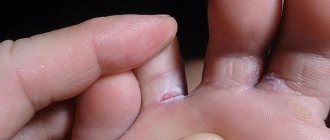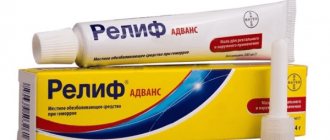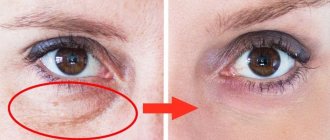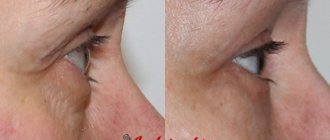Causes
Dry skin around the eyes due to eczema Causes of dry skin around the eyes include:
Weather
Dry skin around the eyes may be associated with climate changes. Humid and hot weather is the main culprit of dry skin. Additionally, any extreme weather conditions or sudden changes in it can aggravate the skin condition.
Skin damage
Damage to the skin can cause dry skin around the eyes. This occurs when the skin is exposed to constant irritations, such as cosmetics. Poor hygiene of cosmetic applicators can also lead to dry skin as harmful bacteria accumulate on brushes and sponges.
Exposure to harsh chemicals
If your eyes are exposed for long periods of time to certain chemicals in the cosmetic products you apply to your face, this can lead to dryness as the skin becomes thinner and more sensitive. Thin skin is naturally more susceptible to irritation from toxins and chemicals, including skin products and facial cleansers.
Dermatological diseases
These include:
- Skin damage due to sunburn, which can cause severe burns to the skin of the eyes. You may also have dry skin around your eyes if you are exposed to welding rays.
- Perioral dermatitis, which is a chronic condition accompanied by a skin rash that is usually caused by poor hygiene.
- Blepharitis, which mainly affects the eyelids, causing inflammation, dryness and scaly skin.
- Eczema can occur in areas around the eyes, including the eyelids. In addition to dryness, eczema makes the skin scaly.
Why do the eyelids peel?
There are many options for the appearance of scales on the skin; their rash can be triggered by both illness and an innate tendency to dry skin.
Reasons why the eyelids peel and itch
There are several main reasons influencing this phenomenon:
- allergic rashes (reaction to animals, flowering plants, food, cosmetics and medications, dust, etc.);
- fatigue of the visual organs;
- fungal, viral, bacterial diseases (herpes, papillomas, etc.);
- eyelash mite (demodex);
- skin dermatitis - acute allergic manifestations to various factors;
- blepharitis - inflammation of the edge of the eyelashes that occurs against the background of decreased immunity;
- dysfunction of the sebaceous ducts around the eyes;
- atopic dermatitis is a chronic non-contagious allergic disease;
- increased dryness of the skin.
Dryness of the eyelids as a cause of their peeling
Bright sun, frost, windy weather, poor environmental situation in the place of residence can affect the condition of the skin of the eyelids. In addition to natural phenomena, the skin defect is significantly affected by stressful situations, which the life of a modern person cannot do without, as well as too little sleep, poor diet, poor cosmetics, lack of care and bad habits.
Diseases
A number of skin problems, accompanied by itching and swelling, can provoke this phenomenon:
If you notice dryness and flaking of the eyelids, first of all you need to provide good care - use moisturizing and soothing products.
If the problem is not poor nutrition or lack of sleep, then you should seriously concern yourself with your health and consult a doctor - suddenly your body is affected by an unpleasant disease.
Brief description of the problem
The outer layer of skin in this area is characterized by fewer rows of cells in the epidermis. It is thinner (about 3-4 times) than on any other part of the body. The epidermis of the facial skin has 8-10 layers, and the eye area has only 4-5. Elastin fibers are weakly expressed and are located in rings around the eyes from the outer to the inner corners of the lower eyelids and from the inner to the outer of the upper eyelids.
Sebaceous and sweat glands are absent on the skin of the eyelids, and there are no hair follicles. For this reason, these areas suffer from a lack of fatty lubrication and a rapid loss of elasticity. Fat cells have the ability to draw moisture from surrounding tissue. They are absent in the subcutaneous tissue of the eyelids, which is the cause of swelling under the eyes.
Another feature of the skin around the eyes is a large accumulation of blood vessels located close to the surface, due to which dark circles appear under the eyes.
These factors make the epidermis in this area of the face vulnerable and sensitive. Early wrinkles appear under the lower eyelid and in the corners of the eyes, the skin dries out and swelling forms. Women are very worried, because increased dryness makes age-related changes more noticeable.
Diagnostics
Diagnosis of the cause that caused pathological changes in the eyelids and eyes is usually carried out on the basis of external signs. The ophthalmologist examines the patient, asks about concomitant symptoms and previous diseases.
In some cases, it is necessary to conduct a laboratory study of discharge from the eyes, tear fluid; if demodicosis is suspected, the subject of the study is the eyelashes (several pieces from the lower and upper eyelids).
After diagnosis, treatment is prescribed; the principle of therapy is selected individually in each case.
Here are the basic rules:
- Allergies can be treated with antihistamines in the form of tablets or ointments.
- For keratitis and conjunctivitis, antibacterial drops and ointments are used; in severe cases, oral administration is recommended.
- Treatment of demodicosis is carried out comprehensively - the patient is recommended to undergo antiparasitic treatment of the eyelids, take immunomodulators and vitamins, and associated symptoms are eliminated with antihistamines.
- Treatment of stye requires caution. Before ripening, it is not recommended to warm it up at home, but it is permissible to speed up the process with physical procedures. If its size is large or the patient experiences severe discomfort, the stye is opened in the hospital. To speed up healing and prevent the spread of infection, use antibacterial ointments and lotions.
- To eliminate eye fatigue, special moisturizing drops, vitamins, and eye exercises are prescribed.
The duration of treatment, list of medications and dosage are selected individually.
Medicines
Treatment of many eye diseases is carried out comprehensively and is prescribed by a doctor, based on the severity of the disease, age and health of the patient. The list of medications varies in each specific case. The most available drugs:
- Antibiotics are drugs of synthetic and biological origin with an antimicrobial effect.
Okomistin, Levomycytin, Albucid, Torbex, Tsipromed are prescribed in the form of drops. When the mucous membranes and membrane of the eyeball are affected, it is more effective to use ointments: tetracycline, Torbex.
- Antiseptics to prevent the spread of infections.
For eye diseases, use the most gentle, non-irritating mucous agents: Vitabact, boric acid solution or preparations with silver.
- Antihistamines are drugs to relieve itching and swelling.
These can be traditional Claritin, Loratidine tablets or topical preparations: Alergodil drops, Opatonol, hormonal ointments with hydrocortisone or dexamethasone.
- Antiviral agents: Anaferon, Acyclovir (ointment), Solcoseryl.
- Antifungal drugs: Levorin, Nystatin.
- Anti-inflammatory drugs are used if eye damage and peeling are non-infectious: Dexamethasone drops, Sofradex, Maxitrol.
- Vasoconstrictor drops, for example, the well-known Visine, help eliminate eye fatigue.
To increase the body's resistance to infections, immunostimulants (Echinacea tincture, Ergoferon) and vitamin complexes are prescribed. In the treatment of eye diseases, biological supplements with blueberries and eye vitamins are effective: Vitrum Vision, Complivit Oftalmo.
To eliminate the cause of peeling eyes, local remedies are usually used: drops and ointments. Such drugs act directly on the pathogen and practically do not penetrate into the blood.
If treatment involves the use of several types of drops, they are applied at intervals of at least 15 minutes. Ointments intended to act on the eyeball are usually placed under the eyelid at night.
Traditional therapy
You can get rid of peeling eyelids and other signs of eye disease using alternative medicine. They can be used if a symptom occurs as a result of allergies, fatigue, dry air, or as an auxiliary method in the treatment of serious diseases (usually after recovery).
To moisturize the skin, you need to wash your face with boiled, melt water, herbal decoctions or natural tar soap. The latter has unique properties: along with a pronounced antibacterial effect, it softens and moisturizes the skin.
Herbal decoctions can be used for rinsing and lotions. To prepare healing liquids, chamomile, St. John's wort, calendula, string, and celandine are used. The last two are used if it is necessary to eliminate the inflammatory process. They are not suitable for healing or dry skin, as they are very drying. Celandine is a poisonous plant, so you must be careful when using it.
The preparation of the medicine is very simple: a tablespoon of any herb (or a mixture of several) is poured with a glass of boiling water and kept in a closed container until it cools or boiled in a water bath for 5-10 minutes. The liquid is filtered through thick cloth and used:
- As lotions (compresses). Cotton pads or a piece of cloth are moistened in liquid and applied to closed eyelids for 15-30 minutes.
- For washing eyes. Moisten a cotton pad generously and wipe the eye from the nose to the temple. If both eyes are affected, use separate discs.
- For rinsing the face after washing. The infusion is diluted with boiled water (1 to 5) and irrigated on the face.
For the same purposes, you can use black tea, preferably large leaf tea without additives. It is necessary to prepare a very strong brew and use it as described above.
Softening masks made from available products will help eliminate peeling.
Recipe one:
- grate raw large carrots on a fine grater;
- add the yolk of a chicken egg to the vegetable mass, mix;
- add 1.5-2 tablespoons of flour to the mixture and beat well;
- apply the mixture in a thick layer to the eyelid;
- leave for 20 minutes and rinse.
Recipe two:
- mash a ripe banana with a fork;
- melt 2 tablespoons of honey and the same amount of butter in a water bath;
- connect all components;
- Apply on eyelids and wash off after a quarter of an hour.
Recipe three:
- Boil large potatoes in their skins, cool and mash;
- soak a piece of white bread in cream;
- connect both components;
- Apply on eyelid for 20 minutes.
Fresh parsley juice, a mixture of carrot and apple juice, cosmetic oils (cocoa, peach, wheat germ, shea) or regular olive oil will soften delicate skin.
During treatment, you need to pay great attention to hygiene procedures, stop wearing contact lenses and follow all the doctor’s recommendations.
Dry itchy skin
The skin around the eyes is the thinnest, so if it is dry and flaky, it may also be red and irritated. Dry skin around the eyes can occur for a number of reasons and results in itching and flaking. This may be caused by the following conditions:
- According to the National Psoriasis Foundation, facial psoriasis can occur around the eyes, most commonly on the eyebrows. It dries out the skin, making it scaly.
- Eczema can occur anywhere on the body and results in severe dry patches that become itchy, red and inflamed.
- Blepharitis is an inflammatory condition that affects the eyelids due to malfunction of the sebaceous glands. This condition is characterized by red, itchy and flaky eyelids.
Some of the side effects of using cosmetics and makeup on the skin around the eyes are:
- Contact dermatitis occurs due to an allergic reaction to certain irritants that touch your skin, causing itchy facial skin.
- Cosmetics such as eyeliner, mascara, eye shadow, or the tools used to apply them can accumulate bacteria over time, which will irritate the skin, dry it out, and possibly make it scaly.
- Facial products can also irritate and dry the skin around the eyes.
What are the causes of dermatitis on the eyelids?
Eyelid dermatitis is caused by a number of external or internal factors. Exogenous or external irritants affect the skin of the eyelids from the outside. Having penetrated the bloodstream, they become internal or endogenous. For the eye area, external or contact forms of dermatitis are more typical.
They may be associated with a local allergic reaction to cosmetics, medications, household chemicals, pollen, and animal hair. In addition to allergic reactions, the causes of periorbital dermatitis may include the following:
- bacterial and viral infections (herpes virus, bacterial infections, measles, scarlet fever, chickenpox);
- exposure to ultraviolet radiation or cold air;
- contact with the eye area of products containing active chemical elements;
- pathological functioning of the sebaceous glands as a result of activation of the Malassezia fungus;
- bites of blood-sucking insects.
When exposed to internal factors, the localization of inflammation varies widely, including the periorbital region. Their impact is often associated with the individual characteristics of the body. Common causes are the presence of chronic diseases (autoimmune reactions, metabolic disorders, endocrine pathologies), the use of medications and products containing allergens, and family history.
Eye dermatitis is quite common and occurs in 27% of cases.
How to take care of yourself?
Recommended skin care under the eyes:
- Choosing the right cleaning products. For care, you should use specially designed tonics, creams and liquids. The use of bar soap is not recommended. Do not wash your face with too hot or cold water. The optimal temperature should be close to room temperature.
- Daily hydration for sensitive skin. The main condition is that the product must be intended specifically for this area.
- Nourishing eye creams should contain regenerating and soothing ingredients. To moisturize, you should choose products that include hyaluronic acid.
- It is necessary to maintain water balance. You should drink at least 2 liters of clean water without gas per day.
- Canned and smoked products should be excluded from the diet. Salty, spicy and sweet foods are not recommended. Vitamins, minerals and trace elements found in large quantities in fresh fruits, vegetables and herbs are beneficial for facial skin.
- It is mandatory to use sunscreen with a high SPF factor. When exposed to direct sunlight for a long time, wearing sunglasses is required.
- It is necessary to stop smoking. Nicotine destroys vitamin C, necessary for the formation of collagen, the lack of which ages the skin prematurely.
- When applying a face mask, you should avoid getting it on the eyelid area.
Prevention of the problem
It is not possible to completely prevent a dangerous manifestation even with preventive measures, but it is quite easy to partially reduce the danger. The eyelids often peel and itch as a result of careless hygiene or improper care of the skin, so it is better to adhere to the basic recommendations.
Strict adherence to the following rules will partially prevent trouble:
- use only high-quality cosmetics (preferably natural), and be sure to completely wash off makeup before going to bed;
- do not rub your eyes with your hands, especially dirty ones;
- for washing, use only preparations suitable for your derma type (if necessary, consult a cosmetologist about what to give preference);
- regularly carry out procedures to soothe the eyes, use herbal decoctions (chamomile, green tea);
- change your diet, introduce vegetables and fruits.
Dry red skin
Possible causes of dry, red skin:
Fungal infections
Red, dry skin around the eyes can be caused by a bacterial infection such as ringworm. It is usually described as a ring-shaped, red, itchy rash. Sometimes crusting is present if the symptoms of infection are severe.
Environmental factors
External factors such as dampness, cold weather, and exposure to sunlight can cause redness around the eyes.
Other reasons include:
- Allergies caused by atopic dermatitis.
- Psoriasis
- Seborrheic dermatitis
- Rosacea
- Soap and detergents
- Chemical substances
Prevention
Often, peeling and many ophthalmological disorders are easier to prevent than to eliminate later. To do this, you need to follow the following recommendations:
- exclude possible allergens;
- replace contact lenses on time (after any infectious diseases, be sure to purchase a new pair);
- use high-quality decorative cosmetics, cleansers and care products;
- remove makeup every evening;
- spend less time at the computer, take regular breaks from work;
- humidify the air in the room;
- do not touch your eyes with dirty hands.
Peeling skin can occur due to frequent stress or lack of vitamins. To prevent the problem, you need to eat foods that contain substances beneficial to the skin:
- dairy products;
- fish;
- liver;
- nuts;
- fresh seasonal fruits and vegetables;
- lean meat;
- liquid (pure water, herbal teas) in an amount of 2 liters per day.
To normalize your emotional state and sleep, it is recommended to drink tea with chamomile and mint, boiled milk with honey at night.
Excessive dryness and flaking of the skin on the upper eyelid is one of the signs of dysfunction of the body or visual system. This symptom cannot be ignored; if it occurs, it is necessary to change your diet, lifestyle and consult a specialist.
Very dry skin
Very dry skin around the eyes is usually caused by makeup. Dry skin needs treatment as it is more susceptible to damage such as cracking and also increases the likelihood of wrinkles around the eyes.
Additionally, dry skin may indicate an underlying condition, and if it does not respond to treatment with cosmetics and home remedies, it is best to see a doctor. There are several possible causes of dry, red, flaky and itchy skin around the eyes:
- Cold and windy weather in autumn and winter.
- Sun exposure
- Psoriasis
- Dehydration
- Skin care products
Symptoms
The appearance of peeling areas of skin around the eyes may be the only symptom of problems in the body, but most often it is accompanied by other complaints. These include:
- loss of eyelashes and eyebrows;
- changes in skin color and texture (redness, strengthening or weakening of natural pigmentation, skin pattern);
- the appearance of blisters or other elements of the rash;
- the appearance of purulent or mucous discharge from the eyes;
- swelling of the skin.
The manifestation of these clinical signs will help the doctor determine the nature of the disease and its causes, therefore, when visiting medical institutions, you need to indicate in detail how and after what the symptoms bothering the person developed.
With allergic manifestations, both eyes are usually affected, causing severe swelling, watery eyes and a runny nose. Often these signs appear after eating certain foods or during the flowering of certain types of plants. Typically, adults already know the substances that cause their corresponding complaints.
When affected by some skin mites, individual itchy and flaky areas of skin appear near the eyelashes. Symptoms usually appear in the autumn and spring months or after a decrease in immunity. They can go away on their own without treatment.
Blepharitis (inflammation of the ciliary edge of both eyelids) can be a consequence of the development of pathogenic microorganisms (viruses, fungi, bacteria). It may appear in one or both eyes, accompanied by pain, purulent or mucous discharge from the eyes, and redness of the skin. Sometimes the disease spreads to the mucous membrane of the eye itself, causing conjunctivitis.
Peeling of the skin in the eyelid area can occur after a chemical burn or exposure to ultraviolet radiation, for example, in a solarium or when welding metals. It is usually accompanied by eyelid soreness, sensitivity to bright light, and redness. In more severe cases, blisters with transparent contents may appear on the eyelids.
With hormonal problems, the appearance of skin flakes may be accompanied by loss of eyelashes and changes in pigmentation. Typically, such manifestations of diseases do not cause severe itching or pain, but they can cause psychological discomfort, especially in women.
Symptoms caused by low-quality cosmetics or false eyelash glue are usually immediately associated with the use of these products and worsen after repeated application to the skin. This can cause contact dermatitis on the eyelids or allergic reactions.
It is not always possible to independently determine the cause of peeling skin near the eyes, so it is better to consult a dermatologist or ophthalmologist. Only a doctor can correctly assess all the existing clinical signs and determine the disease that caused them.
What to do when your eyelids itch?
What to do if your eyelids are dry and itchy? If you experience symptoms in which your eyelids itch and become red, you should immediately consult a doctor.
You should not postpone the visit if the pain is very severe, and pus comes out of the eyes and other discharge is observed.
Therapeutic measures will be different for each person, so there is no need to look for a universal answer to the question of what to do to eliminate annoying symptoms. Among the methods of treatment for the cause of peeling eyes, there are several:
In order for therapy to be successful, the diet must be balanced, minerals and special nutritional supplements must be taken. To get rid of dryness and cracks, you need to make masks with olive or almond oils.
Flaky skin can be softened with oatmeal, which is steamed with hot milk. Butter is added to this mixture. Applications made from bananas, carrots, boiled potatoes, and bread soaked in milk also help.
At home, you need to use tar soap, lubricate your eyelids with sulfur ointment, and wash your face with a decoction of oak bark. It is recommended to regularly make compresses from:
- juniper;
- linden;
- fresh cabbage juice;
- buckthorn.
Decoctions prepared with chamomile must be alternated, first using cold, then hot. But traditional medicine must be combined with drug therapy.
If the upper eyelid itches and peels, then you should not ignore this signal from the body. Most likely, it arose for a reason, and indicates certain problems with eye health.
Be that as it may, you should not self-medicate. In order not to harm yourself, you first need to establish the causes of peeling skin on the eyelids, and only then begin to act actively.
Useful tips for getting rid of flaking eyelid skin
To get rid of the problem, you need to carefully approach the question of what to do if the skin on your eyelids is peeling. First of all, determine the cause of this anomaly. Only after this, based on the results obtained, will it be possible to safely take certain measures.
So, general recommendations for getting rid of peeling skin of the upper eyelid are:
- Proper diet enriched with fresh fruits and vegetables.
- Avoiding stress and overwork.
- Using only high-quality decorative cosmetics.
- Purchase lenses and liquid for storing them only from trusted, licensed companies and pharmacies.
- Monitoring the cleanliness of facial skin in general.
- Avoiding eye strain.
- Avoiding contact with allergens that cause the eyelids to become red and flaky.
- Moisturizing dry eyelid skin with face creams or other cosmetics.
- Timely visit to the doctor for examination to identify various diseases. This step is especially important if all your efforts to get rid of itching and peeling of the eyelids have not been successful.
All kinds of medications are used to treat demodicosis, blepharitis, conjunctivitis or barley. In particular, this applies to eye drops and ointments.
If we are talking about herpes, due to which the skin on the eyelids becomes dry and peeling (at the last stage of the disease), then it can be cured with the help of tablets, creams or ointments (Acyclovir, Gerpevir, Zovirax, Acik, etc.).
Dry skin under the eyes
If you have dry skin under your eyes, the reasons may be the same as we have already mentioned, namely:
- Climate change
- Skin irritation
- Harsh chemical exposure
- Sunburn
- Dermatological disorder
- Skin diseases around the eyes
Skin sensitivity is not easy to control, especially when it becomes dry, itchy and scaly. The situation becomes more complicated if you continue to use cosmetics such as mascara and eyelash curlers while you have allergies.
These signs mostly occur with dry eyelids, but they can be associated with skin conditions such as blepharitis. To be safe, do not treat allergies. The best action to take is to get diagnosed. If the skin around your eyes becomes very painful, consult a doctor.
Treatment of dry and flaky skin depending on the cause
Depending on the severity of the causes of skin peeling, appropriate medications are selected.
If after a hot holiday, herbal lotions and additional hydration are sufficient, then for fungal infections, medications are required, including antihistamines and glucocorticosteroids.
What to do if peeling under the eyes is caused by allergies
Often allergic reactions are caused by incorrectly selected cosmetics and, in this case, it will be enough to stop using and actively use moisturizing masks for the dryness and flaking to go away.
Ordinary tap water can also cause an allergic reaction. In this case, it is necessary to cleanse not with foams and cleansers, but with milk and makeup remover with cotton pads.
One of the manifestations of allergies is atopic dermatitis. In this case, take antihistamines, for example, Suprastin and Tavegil.
For external use to relieve symptoms of dermatitis, gels and ointments such as Lorizan and Sudocrem are used.
Sometimes flaky skin under the eyes is a reaction to medications taken. It is difficult to establish that it was the use of these drugs that caused the allergy.
Treatment
The first thing you should do is rule out the presence of eye diseases. If they are, the doctor will prescribe treatment, which must be strictly adhered to. Infectious diseases are usually treated with antibiotic eye drops.
The treatment regimen for ophthalmological diseases is prescribed only by a doctor.
Suspect an allergy? Eliminate possible allergens and start taking antihistamines (tablets and/or gel). If antihistamines do not help with an allergic reaction, the doctor prescribes hormonal medications.
Read more about eye drops for allergies here.
Traditional recipes that are safe and ideal for sensitive skin help relieve redness quite well. This:
- Parsley compresses - fresh herbs are cut as finely as possible, placed in gauze bags, which are then applied to the eyes for 10 minutes.
- Lotions with chamomile decoction - make a decoction from a pharmaceutical herb, soak cotton swabs in it and apply to your eyelids.
- Baking soda – prepare a weak soda solution, soak cotton swabs or gauze in it and place them on your eyes for 15 minutes.
- Compress with dill – dill should be used in the same way as parsley.
- Tea bags are a simple and quick way that is always at hand. To achieve maximum effect, place wet tea bags in the freezer for 5-10 minutes before use.
Chamomile has a pronounced drying effect, so it is better not to use it if the skin is peeling.
Please note that folk recipes help relieve redness, but do not cure. If the problem comes back again, be sure to consult a doctor.
Read about the causes of red eyes in the article.
Help from traditional medicine
If the cause of the anomaly does not lie in a serious illness or you simply don’t have time to visit the clinic, try using the gifts of nature and grandma’s recipes. Some of them are excellent substitutes for medications and successfully fight the disease. However, despite their effectiveness, there is no need to abuse traditional medicine. Before using any recipe, consult your doctor.
To moisturize dry skin, use melt water and wash your face with it every morning; herbal decoctions or tar soap are also suitable for this purpose. Tinctures from medicinal plants are an excellent option for compresses. The most commonly used plants are calendula, chamomile, and St. John's wort. At the stage of regeneration of the epidermis, you cannot use string and celandine, as they are very drying
Use the latter with extreme caution, as it is poisonous.
To prepare a medicinal decoction, no special knowledge or skills are required. Take a tablespoon of herb, pour a glass of boiled water and keep in a closed container until the infusion has cooled. Next, strain it and use it in the following way:
- As lotions. Soak a cotton pad in the liquid and apply to the affected organ of vision for half an hour;
- For washing. Soak a cotton swab well in the solution and wipe the eye in the direction from the nose to the temple;
- For rinsing. Dilute the broth with boiling water in a ratio of 1:5, and irrigate your face with it every time after washing.
Several proven traditional medicine recipes will also help get rid of peeling.
Camomile tea
Take one tablespoon of dried chamomile flower and pour boiling water over it. After the composition has infused, strain it. Soak a cotton pad in the liquid and apply to damaged eyes. If the infusion is diluted with water, it can be used as eye drops. It relieves fatigue, relieves dryness and irritation.
Tea brewing
They help with visual fatigue and as therapy for a variety of ophthalmological pathologies. It is better to use loose leaf tea, but you can opt for bagged tea. The brew should be very strong, soak the discs in it and apply for about fifteen minutes.
Aloe juice
Cut the aloe leaf and place it in the refrigerator, this will help achieve the desired consistency. Within seven days, the juice is saturated with enzymes and becomes liquid. Lubricate damaged skin with it. The juice moisturizes well, eliminates redness and itching, and restores the epidermis.
How to get rid of dry skin around the eyes?
Let's look at treatment methods, as well as folk remedies.
Treatment
Use antibacterial gel. They will prevent the addition of staph infections, which are likely to worsen the condition.
Eczema is treated using moisturizing creams and lotions, and you may also need oral steroids. Eczema can also be treated with lotions and gels containing antihistamine, antifungal, antibiotic, antibacterial, anti-inflammatory or analgesic ingredients.
Use creams to moisturize dry skin around the eyes, such as Vaseline.
Home Remedies
Some of the best folk methods worth trying are:
Aloe vera
It does not treat the cause, but it calms well and removes the discomfort caused by dryness around the eyes.
Raw milk
Apply raw milk (unpasteurized) to the skin under your eyes. Leave it on for 10-15 minutes, then rinse off.
Cucumber juice
Apply cucumber juice to the affected area, leave until completely dry and use a good quality moisturizer.
Tea bag soaked in cold water
This method not only removes dryness, but also prevents the formation of wrinkles and increases cell regeneration due to its restorative properties.
Causes of peeling around the eyes
To determine the reason why peeling around the eyes appeared, the doctor must interview the patient in detail and find out when the unpleasant symptoms arose. During a visual examination, the shape of the spots, their severity and location near the eyes are determined. If after this it is not possible to make an accurate diagnosis, additional tests are prescribed. There are internal and external reasons that cause redness and peeling around the eyes.
Environmental influences include:
- sitting for a long time at a computer monitor;
- insect bites;
- infections;
- climate change;
- eye injuries;
- wearing lenses;
- chapping of the skin;
- allergies to cosmetics, animal hair, pollen, household chemicals.
If the area around the eyes has become dry and flaky due to vitamin deficiency, the body’s individual reaction to the use of medications, poor-quality products or diseases of the digestive tract, then it is customary to talk about an internal cause of irritation. In some cases, redness and peeling near the eyes indicate a person’s emotional overstrain, which manifests itself in an unusual way.
Demodex
A microorganism called demodex, or eyelash mite, lives in the subcutaneous layer even in healthy people, without showing itself for years. The dimensions of the parasite are tenths of a millimeter, so it is impossible to examine it without special equipment. The mite is transmitted from one person to another and affects areas of the body where the skin is thinner.
It often leads to the skin around the eyes flaking, dryness and redness, and eyelashes sticking together. In order to accurately establish or exclude the presence of eyelash mites, it is necessary to take a scraping from the affected area. The analysis is carried out in the laboratory under a microscope. After identifying the parasite, the doctor prescribes treatment. Modern ointments for demodicosis help to paralyze, destroy the tick, and relieve inflammation.
Allergic reactions
People suffering from allergies are often unaware of their illness. It can manifest itself in adults and children as cough, runny nose, cracks in the corners of the eyes, allergic peeling of the skin. If such symptoms appear, it is recommended to immediately consult an allergist. The most difficult thing in this situation is to identify the allergen that caused the reaction. To do this, a full examination is prescribed, including blood and urine tests.
However, even before the results of the examination are ready, it is necessary to exclude all possible reasons why the skin around the eyes is dry. Factors influencing allergies may include:
- low-quality cosmetics;
- medications;
- plant pollen;
- reaction to food;
- temperature changes.
Infectious diseases
Often, such symptoms are associated with viral diseases that are transmitted from one person to another. They lead to the fact that the entire body is affected, the complication spreading to the eyes and the skin around them. This list includes:
After these diseases go away, dryness around the eyes also disappears, so doctors advise identifying the source of the problem and eliminating it. If peeling began due to an eye infection, then you should urgently consult an ophthalmologist so that the inflammation does not become chronic and lead to blindness. Infectious eye diseases include:
- blepharitis;
- conjunctivitis;
- demodex;
- barley;
- herpes on the eye;
- other fungal infections.
When bacteria become the cause of an illness, you need to look for the source to avoid re-infection. A person can become infected through contact with other people and animals. Blepharitis and stye are caused by Staphylococcus aureus, which is present on the skin in a latent form. People with weak immune systems and poor eye hygiene are at risk of infection.
Intestinal diseases
Symptoms such as peeling of the eyelids often indicate that serious disturbances have occurred in the gastrointestinal tract. The following diseases of the digestive system can be the cause:
- gastritis;
- intestinal dysbiosis;
- chronic constipation;
- impaired absorption of food.
A factor influencing the formation of dry skin and redness around the eyes is poor nutrition, when a person abuses fatty and fried foods, eats food prepared in fast food. In this case, harmful carcinogens and toxins enter the body. They release toxic substances into the blood that cause skin allergies. The same manifestations are worrying if the diet lacks vitamins B and A, as well as due to dehydration.
Fixing effect
As a rule, it is given by a variety of creams that are applied after all procedures. The cream applied is usually a night cream and is used before bed. The fact is that when a person rests, all regenerative functions in the body function better. That is, cell renewal occurs more intensively. Accordingly, if they are given food, they will absorb it much better.
The second is folk remedies. Everyone has probably seen these various photos with nourishing masks and other things. You should immediately focus on one important vegetable. Cucumber. No matter how funny it may sound, a cucumber mask has always been and remains one of the simplest and most effective folk remedies for moisturizing the skin. To do this, again, you don’t need to look for photo recipes, rummage through some old books or visit all the cosmetic stores. Everything here is simple and useful at the same time. Place two slices of cucumber on your eyes with your eyelids closed for 20 minutes. All! The most interesting thing is that on the third day there will actually be a noticeable improvement. Unless, of course, the dryness is due to internal metabolic problems. Of course, there are a number of other masks. But this remedy is one of the most effective.
In conclusion, I would like to say that to avoid dry skin, protect it from aggressive influences (frost, sun), establish a proper diet and diet, and organize quality sleep. A healthy and vigorous body is able to cope with any problems.
Inflammation of the eyelids treatment
This inflammation of the eyelids is often caused by blepharitis. If eyelid inflammation is not treated at the very beginning, you will have to suffer from this disease for many years. If inflammation of the eyelids is left untreated for a long time, vision may deteriorate.
This is the most common disease that accompanies:
- infectious
- viral
- allergic diseases, but this disease can develop independently
What to do first:
- Proper eyelid hygiene is very important
- it is necessary to remove the detachments that have appeared on the eyelid with a swab or damp cloth
- if these detachments have become rough, they need to be softened with a special liquid or eye cream
- prepare a decoction of herbs and wash the sore eyelid and eye
In case of inflammation of the eyelids, treatment should be immediate. It should be traditional, but folk remedies also help very well. Never rub your sore eyes with your fingers.
- constantly strengthen your immune system
- don't sit at the computer for a long time
- When watching TV or sitting at the computer, warm up your eyes
- lead an active lifestyle
- avoid stress
- eliminate cigarettes and alcohol
Traditional treatment of eyelids
Traditional treatment of eyelids is possible and recipes can be selected that are very effective and easy to prepare. There are several folk recipes that can help treat eyelids.
Recipes:
1.
You can prepare an aqueous infusion of calendula, chamomile, clover, plantain leaves or dill seeds based on blue cornflower flowers. Soak two cotton pads in this solution and place on your eyelids for about ten to fifteen minutes.
2.
Tea bags can relieve inflammation and refresh the skin of the eyes. Try to apply them on your eyelids as often as possible.
3.
For inflammation of the eyelids, prepare a decoction of cumin or a decoction of wheat cereal. Moisten cotton pads with the resulting solution and apply to the eyelids.
If the traditional eyelid treatment methods that are given to you do not help relieve inflammation within two weeks, continue treatment with a specialist.
You should also consult a doctor if:
- the appearance of sharp pain in the eyes
- changes in visual acuity
- when wounds or ulcers form in the eyelid area
Good hygiene is the basis of eyelid treatment. There can be a variety of problems that can sometimes cause damage to vision. In order not to lead to serious complications, eyelid treatment must be correct and timely.
Depending on the complication, the doctor may prescribe antibiotics and other medications. The main thing is to apply on time and under no circumstances delay it. Warm compresses made from strong tea leaves. This will cleanse your eyes of pus and relieve inflammation.
Please leave your review if you liked the article
Your opinion is very important. This will help you write articles that are more interesting and useful.
I will be eternally grateful if you share the information with your friends and click on the social network buttons.
Be healthy and happy.











